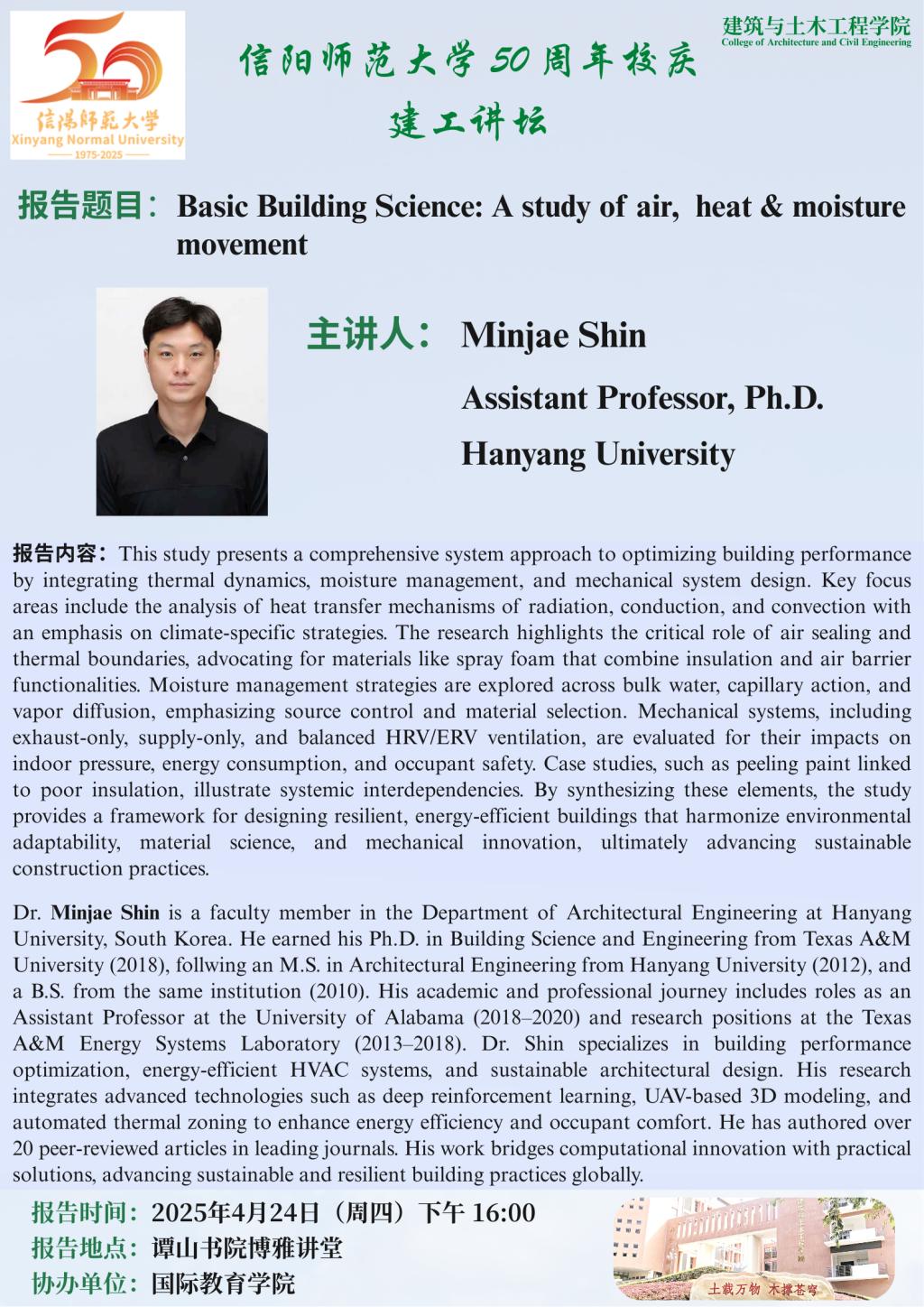报告题目:Basic Building Science: A study of air, heat & moisture movement
报 告 人:Assistant Professor Minjae Shin
报告时间:2025年4月24日(周四)下午16:00
报告地点:谭山书院博雅讲堂
报告摘要:This study presents a comprehensive system approach to optimizing building performance by integrating thermal dynamics, moisture management, and mechanical system design. Key focus areas include the analysis of heat transfer mechanisms of radiation, conduction, and convection with an emphasis on climate-specific strategies. The research highlights the critical role of air sealing and thermal boundaries, advocating for materials like spray foam that combine insulation and air barrier functionalities. Moisture management strategies are explored across bulk water, capillary action, and vapor diffusion, emphasizing source control and material selection. Mechanical systems, including exhaust-only, supply-only, and balanced HRV/ERV ventilation, are evaluated for their impacts on indoor pressure, energy consumption, and occupant safety. Case studies, such as peeling paint linked to poor insulation, illustrate systemic interdependencies. By synthesizing these elements, the study provides a framework for designing resilient, energy-efficient buildings that harmonize environmental adaptability, material science, and mechanical innovation, ultimately advancing sustainable construction practices.
报告人简介:Dr. Minjae Shin is a faculty member in the Department of Architectural Engineering at Hanyang University, South Korea. He earned his Ph.D. in Building Science and Engineering from Texas A&M University (2018), follwing an M.S. in Architectural Engineering from Hanyang University (2012), and a B.S. from the same institution (2010). His academic and professional journey includes roles as an Assistant Professor at the University of Alabama (2018–2020) and research positions at the Texas A&M Energy Systems Laboratory (2013–2018). Dr. Shin specializes in building performance optimization, energy-efficient HVAC systems, and sustainable architectural design. His research integrates advanced technologies such as deep reinforcement learning, UAV-based 3D modeling, and automated thermal zoning to enhance energy efficiency and occupant comfort. He has authored over 20 peer-reviewed articles in leading journals. His work bridges computational innovation with practical solutions, advancing sustainable and resilient building practices globally.
